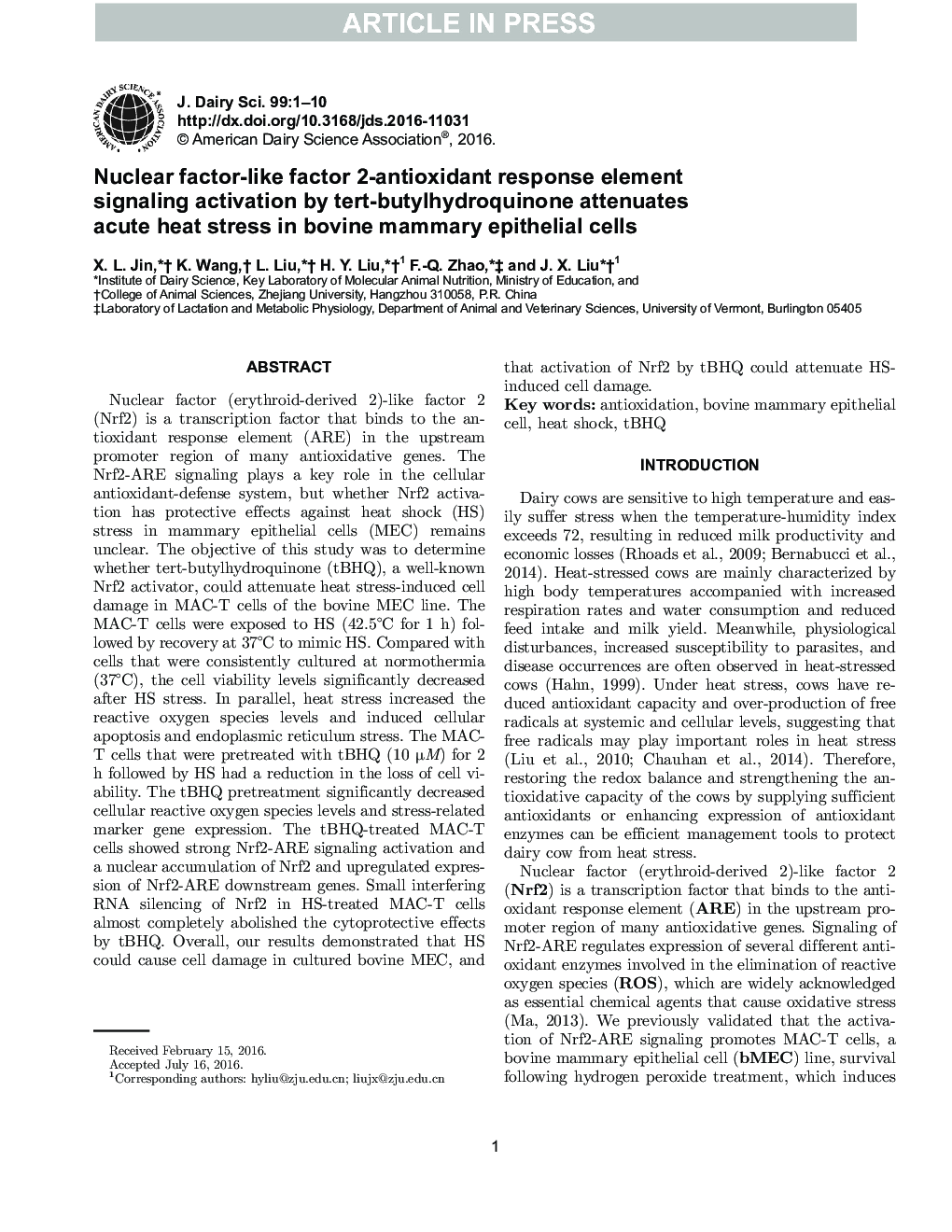| Article ID | Journal | Published Year | Pages | File Type |
|---|---|---|---|---|
| 5542681 | Journal of Dairy Science | 2016 | 10 Pages |
Abstract
Nuclear factor (erythroid-derived 2)-like factor 2 (Nrf2) is a transcription factor that binds to the antioxidant response element (ARE) in the upstream promoter region of many antioxidative genes. The Nrf2-ARE signaling plays a key role in the cellular antioxidant-defense system, but whether Nrf2 activation has protective effects against heat shock (HS) stress in mammary epithelial cells (MEC) remains unclear. The objective of this study was to determine whether tert-butylhydroquinone (tBHQ), a well-known Nrf2 activator, could attenuate heat stress-induced cell damage in MAC-T cells of the bovine MEC line. The MAC-T cells were exposed to HS (42.5°C for 1 h) followed by recovery at 37°C to mimic HS. Compared with cells that were consistently cultured at normothermia (37°C), the cell viability levels significantly decreased after HS stress. In parallel, heat stress increased the reactive oxygen species levels and induced cellular apoptosis and endoplasmic reticulum stress. The MAC-T cells that were pretreated with tBHQ (10 μM) for 2 h followed by HS had a reduction in the loss of cell viability. The tBHQ pretreatment significantly decreased cellular reactive oxygen species levels and stress-related marker gene expression. The tBHQ-treated MAC-T cells showed strong Nrf2-ARE signaling activation and a nuclear accumulation of Nrf2 and upregulated expression of Nrf2-ARE downstream genes. Small interfering RNA silencing of Nrf2 in HS-treated MAC-T cells almost completely abolished the cytoprotective effects by tBHQ. Overall, our results demonstrated that HS could cause cell damage in cultured bovine MEC, and that activation of Nrf2 by tBHQ could attenuate HS-induced cell damage.
Related Topics
Life Sciences
Agricultural and Biological Sciences
Animal Science and Zoology
Authors
X.L. Jin, K. Wang, L. Liu, H.Y. Liu, F.-Q. Zhao, J.X. Liu,
